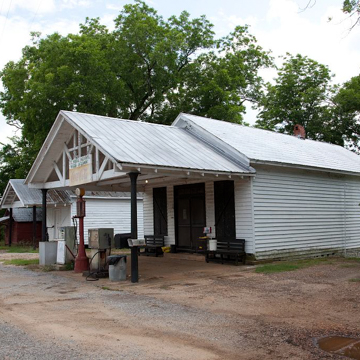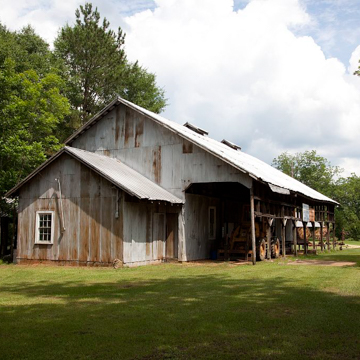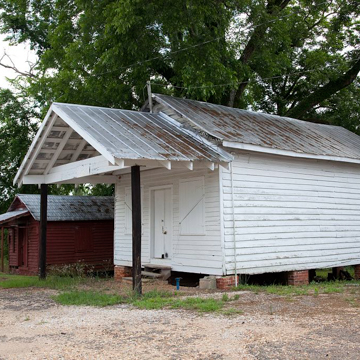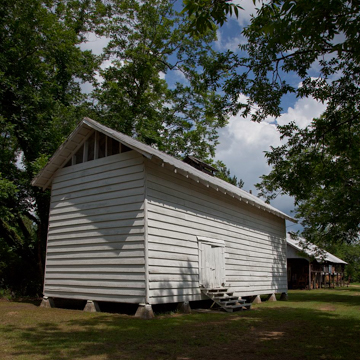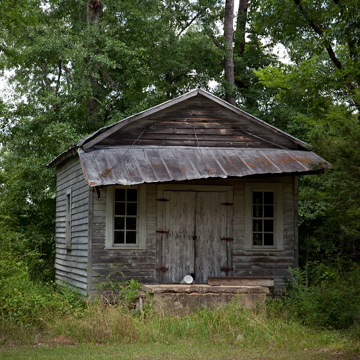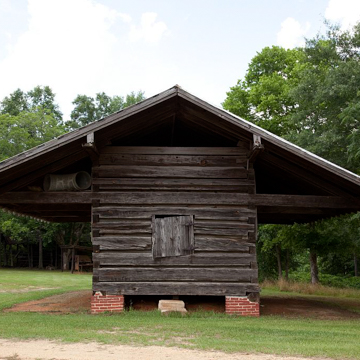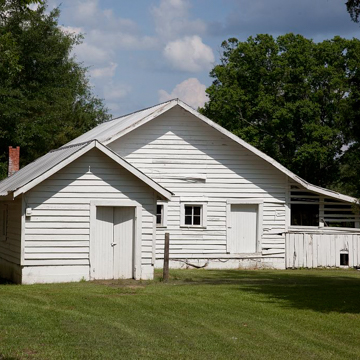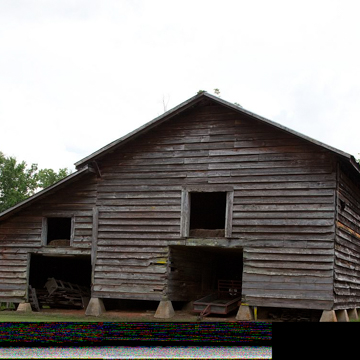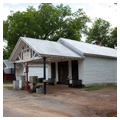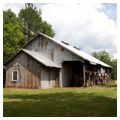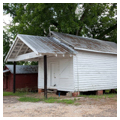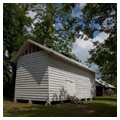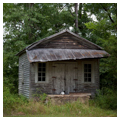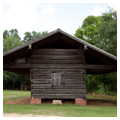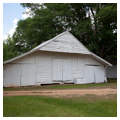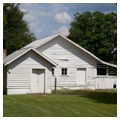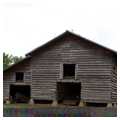You are here
Moore-Webb-Holmes Plantation Complex
Scattered along both sides of a quiet stretch of State Highway 14 some seven miles northwest of the town of Marion, this unpretentious group of farm buildings offer a remarkable snapshot of the kind of workaday structures that once dotted much of Alabama’s rural landscape. Some fifty buildings comprise a sampler of traditional agricultural architecture that is unrivaled in the state, although their parklike surroundings are now neater and more pristine than when they were the center of a working plantation. Missing from the nearly complete ensemble is the original plantation house, which was lost to fire in 1927. On this large plantation are types of buildings that were also likely to have been found on small, family-run farms, including barns, stables, a smokehouse, corn crib and chicken coop, a wellhouse, and so on. But specific to large-scale farming is the early-twentieth-century overseer’s residence and three remaining tenant houses. There is also a cotton gin like those once found at countless rural crossroads across Alabama, plus a country store that still preserves its hand-worked gas pump.
Almost a century earlier, in 1829, an industrious, thirty-year-old settler named William Moore from Newberry District, South Carolina, had begun to put together, parcel by parcel, the plantation he would develop over the next few decades. By 1837 he had patented some 680 acres of newly opened federal land through the public land office at Cahawba. His holdings had more than doubled by 1860, to nearly 2,000 acres, 800 of them “improved” (that is, under cultivation) according the census taker. Upon his death thirteen years later, in 1873, Moore reputedly held some 5,000 acres of land. During the same period, after 1865 and the end of slavery, the plantation made the transition from a workforce of between 30 and 40 enslaved laborers to a system based on tenancy and sharecropping. Cotton would remain the primary cash crop under Moore’s son, John Calhoun Moore (1839–1911), and the plantation would continue to expand—eventually reaching a size of some 20,000 acres. A store, perhaps at the beginning run as a plantation commissary, was opened on the place in 1875, and in 1887 even a post office was briefly established to serve the growing plantation population. Called “Folsom” to honor then First Lady Frances Folsom Cleveland, the post office shared quarters with the store until it closed in 1904.
The onslaught of the boll weevil, decimating cottonfields as it advanced across the Deep South, prompted a major shift in the plantation’s economy beginning about 1914, soon after a third generation of the Moore family assumed control. Under J. Marvin Moore, his sister, Mary Elizabeth Moore Webb, and her husband, Charles, emphasis gradually shifted away from cotton toward crop diversification, timber, and especially cattle production. It was a move accelerated by World War I and the Great Depression. The transition continued intermittently through the 1930s and 1940s under a fourth generation of the family, creating the architectural landscape that essentially predominates today. Presumably during this period, vestiges of the pre-1900 past, including scattered tenant houses from the post–Civil War years and perhaps even old slave quarters, were lost or destroyed.
What is believed to be the oldest structure in the scattered complex is not on the original plantation itself, but rather sits on an adjacent tract to the west, which was absorbed into the Moore plantation in 1897. Dated circa 1835, it is the two-story I- house of William Moore’s antebellum neighbor, John Hogue. Like many early dwellings on Alabama’s plantation frontier, it is a well-built log house later weatherboarded and improved inside and out. Its present narrow, pedimented portico is a twentieth-century replacement of what appears to have once been a long, shed-roofed porch.
Not surprisingly, the plantation’s earliest structures are located near the site of William Moore’s original residence, which is said to have started out as a log dogtrot before it was later remodeled and enlarged. The extant early outbuildings in this vicinity include a smokehouse, chicken coop, combination stable/carriage house, and two hewn log buildings—a corn crib and a seed house, their gable roofs cantilevered precariously out from either side in order to provide a sheltered area for work or equipment storage.
The plantation cotton gin dates from 1935, when realignment of State Highway 14 forced the demolition of its predecessor. The layout, however, is typical of gins dating back to the nineteenth century, with a sidelong area under which mule-drawn wagons and, later, trucks laden with freshly picked cotton lined up to have their cargoes offloaded and processed. As such structures rapidly vanish from the Alabama landscape, the gin is of particularly note in a singular complex that has been recognized for its importance by listing on the National Register of Historic Places in 2011. Exceptionally well maintained by descendants of William Moore, a number of the buildings in the complex may be visited by appointment.
References
Blevins, Brooks. Cattle in the Cotton Field: A History of Cattle Raising in Alabama. Tuscaloosa: University of Alabama Press, 1998.
Moore, Sally, David B. Schneider, and Susan Enzweiler, “Moore-Webb-Holmes Plantation,” Perry County, Alabama. National Register of Historic Places Registration Nomination Form, 2011. National Park Service, U.S. Department of the Interior, Washington, D.C.
Writing Credits
If SAH Archipedia has been useful to you, please consider supporting it.
SAH Archipedia tells the story of the United States through its buildings, landscapes, and cities. This freely available resource empowers the public with authoritative knowledge that deepens their understanding and appreciation of the built environment. But the Society of Architectural Historians, which created SAH Archipedia with University of Virginia Press, needs your support to maintain the high-caliber research, writing, photography, cartography, editing, design, and programming that make SAH Archipedia a trusted online resource available to all who value the history of place, heritage tourism, and learning.














